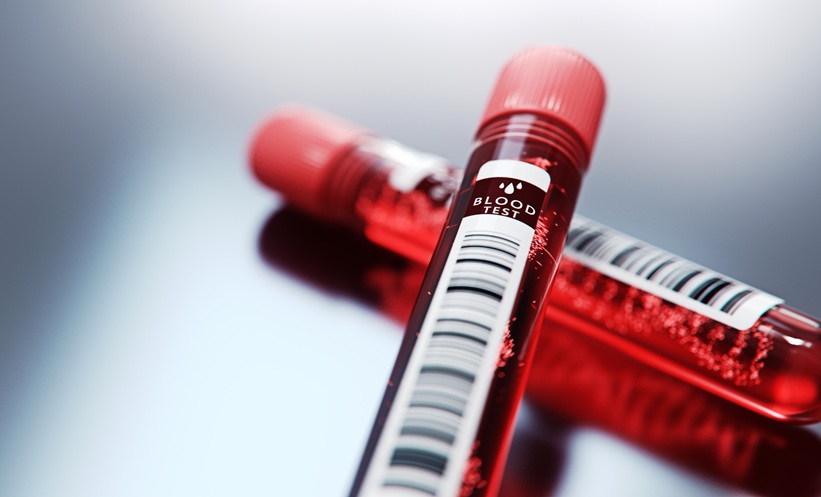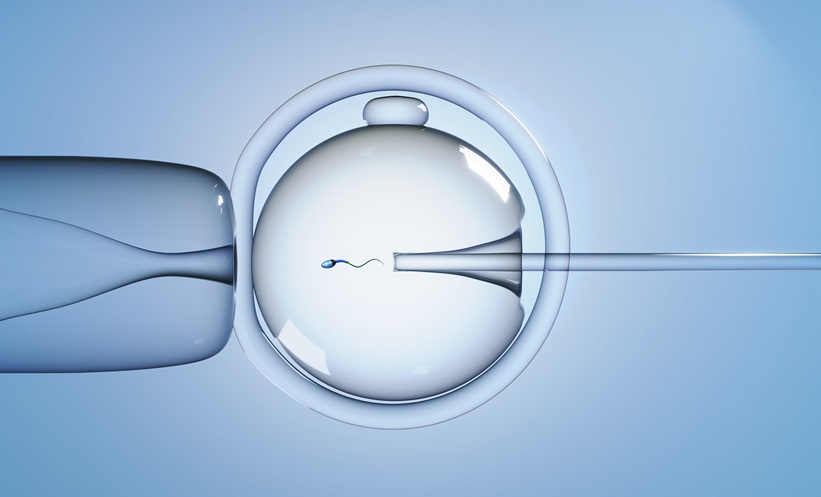The 33rd Annual Meeting of The European Society of Human Reproduction and Embryology (ESHRE) received a huge volume of abstract submissions. Over the 4 days the congress took place, a large number of these submissions were presented: 235 orally and 800 as posters. From amongst this selection, seven presentations were specifically highlighted. One presentation was nominated for the Fertility Society of Australia (FSA) Exchange Award and six received a cash prize of €2,000. The selections were made by special award committees comprising senior scientists and clinicians. In this Abstract Awards section, we place all the prize-winning presentations in the spotlight for your consideration.
The Fertility Society of Australia Exchange Award
This award was won by Mina Popovic (Ghent, Belgium) for work that examined the extent trophectoderm biopsy could be used as a measure of the genomic status of the inner cell mass in human blastocysts. In this study, Popovic and colleagues found that an association between trophectoderm biopsy and inner cell mass was present in most of the samples they analysed. However, they commented that the nature of mosaicism could make it exceedingly difficult to use just one trophectoderm biopsy for making a diagnosis. In order to more completely understand mosaicism, in terms of occurrence and implications, as well as to obtain significant results, the authors are in the process of expanding their research to investigate a greater number of blastocysts. It is hoped that studies such as this will facilitate a more precise quantification of the diagnosis of mosaicism, which will assist selecting suitable embryos for in vitro fertilisation (IVF); this should improve the efficiency, safety, and outcomes of the procedure. The FSA Exchange Award is an educational travel grant that will enable Mina Popovic to travel to the FSA annual meeting and deliver her oral presentation there, allowing a wider audience to appreciate the important findings of this study.
Basic Science Award for Oral Presentation
This award was given to João Pedro Alves Lopes (Stockholm, Sweden) as the first and presenting author of the best oral presentation on a basic science topic. This study sought to answer the question of whether germ and somatic testicular cells co-cultured in a three-dimensional gradient system (3DGS) could reorganise in vitro in a close to in vivo association.
While germ cell proliferation and differentiation have been extensively studied in regard to signalling pathways and cell-to- cell interactions, there is much that is not yet known, as the processes are exceedingly complex and influenced by a wide range of factors, many of which are interconnected. Previous research investigating the mechanisms that determine whether a germ cell proliferates or differentiates has made use of different approaches, including organ culture and the use of primary testicular cells to generate de novo seminiferous-like structures. The researchers sought to investigate whether the 3DGS provided a model that better captured the germ-to-somatic cell associations, in order to enable study of the germ cell niche in vitro.
It was found that rat germ and Sertoli cells co-cultured in the 3DGS reorganised in seminiferous-like structures, thus making it possible to study in vitro germ-to-somatic cell interactions. However, the authors cautioned that, currently, progression in spermatogenesis had not been seen to occur in the culture conditions.
Clinical Science Award for Oral Presentation
This award was given to Heleen Zandstra (Maastricht, Netherlands) as the first and presenting author of the best oral presentation on a clinical science topic. Zandstra and her colleagues from the Maastricht University Medical Center carried out an observational cohort follow-up study to determine if the embryo culture medium used for IVF/intracytoplasmic sperm injection (ICSI) impacted the growth and body composition of singleton IVF children at 9 years of age.
Previous research has shown that the culture medium used in IVF/ICSI has an influence on birthweight and this affect persists up to 2 years old. That previous research alternated assignment to either GITM Version 3 (Vitrolife group) or K-SCICM (Cook group). Participants in this study were contacted after their child turned 9 years old and 46% agreed to participate in follow-up research. At 9-year follow-up, various anthropometric measurements were taken. After correcting for age, anthropometrics of the parents, sex, and other factors, it was found that the culture used for the Vitrolife group was responsible for an additional 1.7 kg of weight (p=0.047) and an additional 3.4 cm in waist circumference (61.4 cm versus 58.0 cm; p=0.01). As a result of these findings, the researchers commented that there was a need for further structured follow-up of IVF/ICSI to obtain more information about the potential long-term health impacts.

Basic Science Award for Poster Presentation
Ellen Casser (Münster, Germany) scooped this award for the first and presenting author of the best poster presentation on a basic science topic. Casser and colleagues’ research study focussed on whether identical (monozygotic) twin embryos cultured in different assisted reproductive technology (ART) media became functionally different.
Two-cell mouse embryos were mechanically bisected and then cultured in parallel in different media. There were two ART media (GM501, SAGE I-step) and one mouse medium utilised (KSOM[aa]). Twin blastocysts cultured in ART media were more likely to result in four epiblast cells, which represents the minimum threshold for further development, than in KSOM(aa) (GM501=5.33±0.46 cells; SAGE I-step=3.92±1.08 cells; KSOM[aa]=3.58±1.08 cells). Furthermore, it was found that a greater number of twins were delivered to term when ART media were utilised. Indeed, when both twins were developed in the same ART medium, 86 pairs were transferred to uterus, which resulted in 28 live births (6 monozygotic pairs). The corresponding figures for KSOM(aa) were 48, 10, and 1, respectively; when one twin was developed in KSOM(aa) and the other in either GM501 or SAGE 1-step, 30 pairs were transferred to uterus, which led to 9 live births (2 monozygotic pairs). The researchers explained, that if their results were produced in other species (including humans), they would demonstrate that embryo culture media have a substantial effect on embryo survival.
Clinical Science Award for Poster Presentation
Paula Piomboni (Siena, Italy) took top honours in this award for the first and presenting author of the best poster presentation on a clinical science topic. Today, although many men are affected by infertility (around 7%), the causes are often unknown. As previous work had found that taste receptors were expressed in testis and sperm and varies among individuals, the researchers hypothesised that polymorphisms in taste receptors could affect sperm functionality and hence investigated potential associations between TAS2Rs/TASIR and GNAT3 gene variability and fertility status in 452 men undergoing semen evaluation during an infertility diagnostic screening.
The findings implied that there was a correlation between TAS2R3-rs11763979 and sperm morphology; TAS2R3-rs11763979 and sperm concentration; and TAS2R14-rs3741843 and sperm motility. However, the researchers cautioned that, due to the low sample size, a larger study is needed to confirm the findings, especially because some taste receptor gene polymorphic variance have a low incidence in the population. Further genetic studies should be conducted in order to build a more comprehensive picture of the genetic components of infertility in males.
The Nurses Award
The prize for the best oral presentation by a nurse was given to Sarah Bailey (Southampton, UK) for the presentation: ‘Hope for the best… But prepare for the worst’. This qualitative study investigated women’s experiences of the first 12 weeks of a new pregnancy following recurrent miscarriage. Participants for the study were recruited from recurrent miscarriage clinics at two major UK hospitals. All participants completed weekly questionnaires to assess their psychological condition and some participants took part in semi-structured interviews. This took place within the context of a randomised control trial feasibility study of a self-help intervention, which was intended to improve psychological well-being during this 12-week period.
A thematic analysis revealed six primary themes. These included women preparing for the worst and expecting another miscarriage would occur, social isolation and loneliness, a constant guilt about their ‘failure’ to have a successful pregnancy, and the positive impact of supportive care and understanding healthcare professionals. The study authors hope that these findings will highlight the care needs of this patient group, although they caution that the UK-based nature of the study may mean that findings cannot be extrapolated across different cultural and national contexts.

The ART Laboratory Award
The award for the best oral or poster presentation by a laboratory technician was won by Sofie Ellegiers (Ghent, Belgium). The study authors endeavoured to answer the question of whether there was a difference in blastocyst quality and formation rate when using a time-lapse imaging system (TLIS) compared to a standard incubator. Although a previous review had found no significant difference in clinical outcome between TLIS and a standard incubator, currently, there is limited data on whether the undisturbed culture characteristic of TLIS could prove beneficial for embryo quality; thus, this was a timely study.
The researchers selected ICSI cycles with embryo transfer on Day 5 and then conducted sequential extended culture on either the TLIS Embryoscope™ (Vitrolife, Frölunda, Sweden) or a standard incubator (Binder CB210; Wolf Laboratories Limited, York, UK). A significant difference was discerned in the TLIS group compared to the standard incubator group in regard to category A quality (excellent) blastocysts, with 15.44% and 10.46% category A blastocysts, respectively. It was concluded that the study showed a possible benefit resulting from undisturbed extended blastocyst culture.








